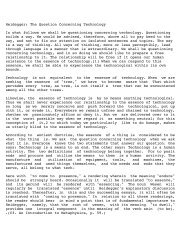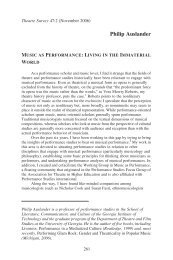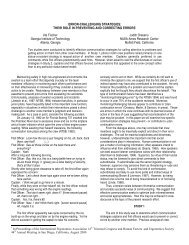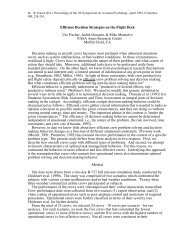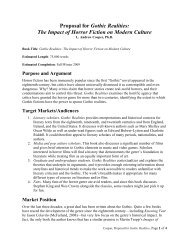INTERACTION DESIGN PRINCIPLES FOR INTERACTIVE ...
INTERACTION DESIGN PRINCIPLES FOR INTERACTIVE ...
INTERACTION DESIGN PRINCIPLES FOR INTERACTIVE ...
You also want an ePaper? Increase the reach of your titles
YUMPU automatically turns print PDFs into web optimized ePapers that Google loves.
Principle: Simplicity<br />
An iTV interface design must be easy to understand, regardless of the user’s<br />
experience, knowledge, or current concentration level. Consumers tend to ignore designs<br />
that have too many bells and whistles. Mullet and Sano argue that the benefits of<br />
simplicity are functional as well as aesthetic in nature (1994):<br />
Approachability. Simple designs can be rapidly apprehended and understood well<br />
enough to support immediate use or invite further exploration.<br />
Recognizability. Simple designs can be recognized more easily than their more<br />
elaborate counterparts… they present less visual information to the viewer, and<br />
are more easily assimilated, understood, and remembered.<br />
Immediacy. Simple designs have a greater impact than complex designs, precisely<br />
because they can be immediately recognized and understood with a minimum of<br />
conscious effort.<br />
Usability. Improving the approachability and memorability of a product…<br />
[eliminating] unnecessary variation or detail make the variation that remains more<br />
prominent and informative.<br />
Achieving a simple design, which always works better for a broad audience, often<br />
means reducing a design to its essence (Herigstad & Wichansky, 1998). Figure 5.22,<br />
from the TV411 prototype developed at the 2004 AFI eTV workshop, presents good<br />
examples of a simple interface that is easily understood at a glance.<br />
145



